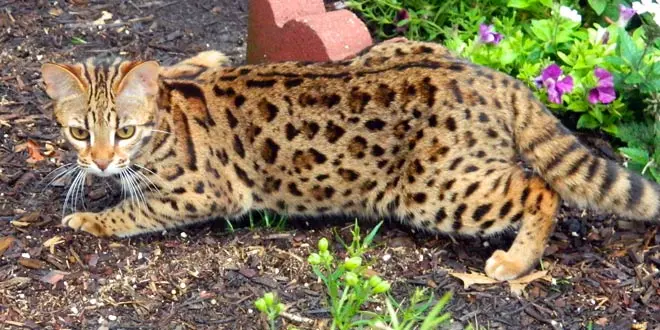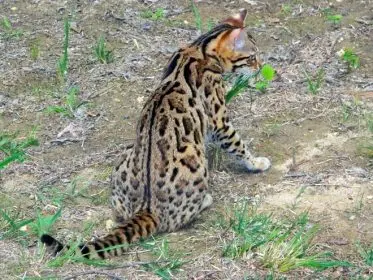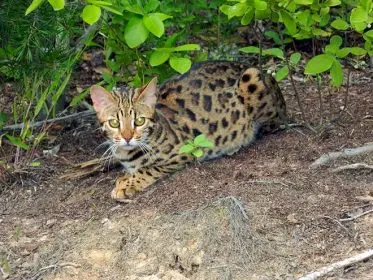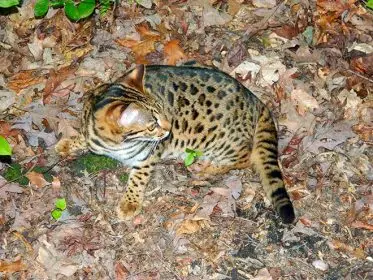Naming Foundation & Filial Cats Affect Understanding of Our Breed
[dropcap]A[/dropcap] new generation of cat lovers are discovering the wonder of Bengal Cats and other breeds developed through purposeful breeding programs of domestic cats. The Bengal Cat’s history is distinctive among the most popular breeds developed in the last decades of the 20th century like the Ragdoll, Ocicat, Toyger and Pixie-Bob because of the use of hybrids between non-domestic species and domestic cats in the breed’s creation.
The Bengal Cat and these new breeds are regularly featured in magazines, TV shows, newspapers and social medias. The increased attention brings with it fantastic opportunity to share the attributes of cats in an increasingly urban world and showcase the passion that fuels their ongoing development and improvement of cat breeds. These platforms offer a medium to share the terrific tales of the applications of aesthetic appreciation and increasing scientific understanding of the traits that define breeds. The jolt to how folks see the world and consider putting aspects of things together in new ways can be a catalyst for progress in way that no hybrid car, solar cell or specialty flavor grapes can do, with an animal that expresses love.
The public’s attention provides the Bengal Cat enthusiast’s best chance to accurately tell describe our breed and the breeding strategy by which they are produced. Misleading or incorrect terminology can totally change how the Bengal Cat is identified to potential owners, animal control officers and those policy makers creating regulations. A web page offering “leopard hybrids” and one offering “a breed of domestic cats” are two totally different things, one likely to cause alarm in neighbors and the other illiciting interest.
TIBCS Bengal Depiction Policy of 1996
1996 marked a significant shift in how the Bengal Cat was portrayed in public and by the breeders. The International Bengal Cat Society led by President Pam Knowles, Past Presidents Libbie Kerr and Karen Sausman and founder Jean Mill created a policy for their membership of not using photos of Foundation generation Bengal Cats in advertising or outreach intended for the public. They went further by encouraging the Bengal Cat community to not use the word hybrid except when speaking of first generation crosses between the Asian Leopard Cat (Prionailurus bengalensis) and domestic cat or using percentages to reference the amount of nondomestic ancestry. This policy was adopted by most of the membership and the major cat publications at the time including Cat Fancy, Cats Magazine and Cats USA.
The classified section of those magazines that featured many ads from Bengal Cat breeders as it was prior to the internet went from mostly foundation generation/Asian Leopard Cat images to all SBT Bengal Cats. This change helped the public accurately understand the domestic Bengal Cat and its origins.
Today’s internet has no such policy. It can be a confusing and hazardous miasma of misinformation that can lead to breed specific legislation and even the outright banning of Bengal Cats as pets. How every generation of Bengal Cat is referred has serious consequences.
Some of the terms and names that are well understood within the cat fancy have different meanings in science and the larger society. The use of accurate language can help avoid confusion and foster understanding about the breeds and breeding programs within the cat fancy.
Filial Generations
Filial breeding strategy was developed by Gregor Mendel, the monk considered the father of modern genetics, in his crossing breeding of pea plant species. The first published use of the term occurred in 1902 according to Merriam-Webster English Dictionary defining it as “a generation in a breeding experiment that is successive to a mating between parents of two distinctively different but usually relatively pure genotypes”. This accurately describes an F1 Bengal Cat, who has parents of two distinctive species designation in the Asian Leopard Cat and the domestic cat.
F1 Bengal Cats from Jungletrax – © A.Hutcherson/Bengalcats.co
To produce the F2 generation of anything (Nectarines, Mice or Cats) one must breed an F1 to an F1 (F1 X F1). To produce the F3 generation of anything, one must breed one F2 to another F2. There are legitimate feline examples of F2, F3 through F12 and beyond in the cat fancy. These involve the crossing of lines or breeds in which both genders are fertile and bred back to one another. Examples abound in the Ocicat (Ocicat X Abyssinian crosses), Tonkinese (Burmese X Siamese crosses), Burmilla (Burmese X Chinchilla Persian) and many other breeds. TICA (The International Cat Association), the world’s largest genetic registry was founded on the paradigm of a perpetually open registry for all breeds as a principle of health, accuracy and honesty.
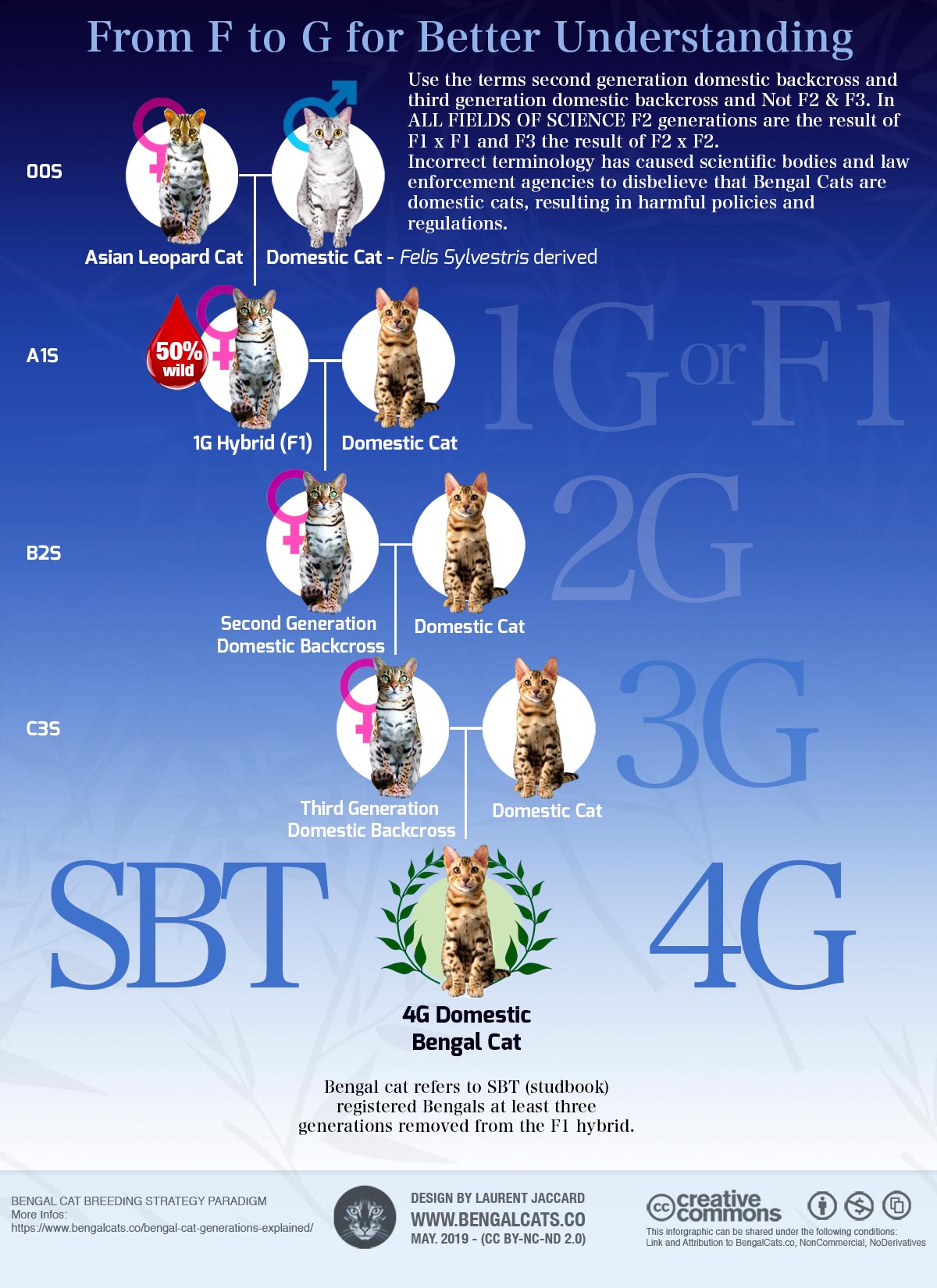
Infographic: Bengal Cat generations explained – © A.Hutcherson/L.Jaccard/Bengalcats.co
Embed this infographic image on your site (Please include attribution and link to Bengalcats.co with this graphic):
Copy and paste the above code on your website to embed this infographic.
Just press command+c on Mac or control+c on Windows to copy embed code.
In all scientific, academic, legal and public settings the reference to “F2” is specifically and unequivocally the offspring of the F1 generation bred to another F1. Published studies in the world’s most respected journals of medicine, biology and zoology all use these terms in this manner.
In that example, there is no diminishing of the genetic contribution to either parent. The F2 Bengal Cat would therefore have the potential to have as much genetic contribution from the Asian Leopard Cat as an F1. To those writing laws, interpreting policy or enforcing regulations about hybrids animals this means the F4 or F5 Bengal Cat should could potentially have the same amount of genetic relationship to the Asian Leopard Cat as an F1. Many laws around the world were written with that understanding.
There are no F2, no F3 and no F4 Bengal Cats, using the accepted definitions of science and law.
However, an internet search will yield hundreds of results for those queries. Because sterility in male non-domestic cat X domestic cat hybrids, only F1 females produce offspring. [highlight color=”orange”]There has never been an F2 Bengal Cat…ever![/highlight] We have lots of F1 X domestic backcross females who have been instrumental at providing precious genetic material to subsequent generations. However, typing and saying “F1 X domestic backcross” takes many more syllables, many more characters and more time for feline enthusiasts. Breeders got in the habit of saying “F2” although it was understood the reference was to a F1 X domestic backcross.
Foundation Generations
TICA registers foundation generations in all breeds, meaning they are or have in their pedigree a cross between two distinct breed populations. That registry requires three generations of breeding back to goal breed before departure from the Foundation generation into the desired breed. The first three generations of Asian Leopard Cat to Domestic Cat and the successive domestic backcross populations are legitimately foundation Bengal Cats.
The registration status in TICA is a mixture of numbers and letters that have no meaning to the general public. Not all Bengal Cats of foundation generations are registered with TICA and a system of naming needs to be both easy to understand and clear no matter the cat association.
It is appropriate to either use the existing scientific nomenclature or a naming system developed by TICA’s Bengal Cat Breed Committee that prevents confusion and accurately describes the pedigree. TICA’s Bengal Cat breed committee agreed to use 2G and 3G to more precisely identify the generations removed from a non-domestic feline of any cat. Thus, the correct terms in the breeding strategy for producing an SBT Bengal Cat becomes:
Asian Leopard Cat X domestic cat = F1
F1 X domestic cat (B, C or SBT Bengal) = 2G
2G X domestic cat (B, C or SBT Bengal) = 3G
3G X domestic cat (C or SBT Bengal) = SBT
Leopardette to Bengal Cat
Jean Mill began calling her breed of domestic cats bred to look like Leopards, the Leopardette. Television programs, books and magazines referred to her cats as Leopardettes. TICA registered a single F1 female in 1983 as a Bengal. The cat was one who had been bred by Bill Engler and even shown in ACFA (American Cat Fanciers Association) where TICA President Georgia Morgan and Vice President Larry Paul met the cats.
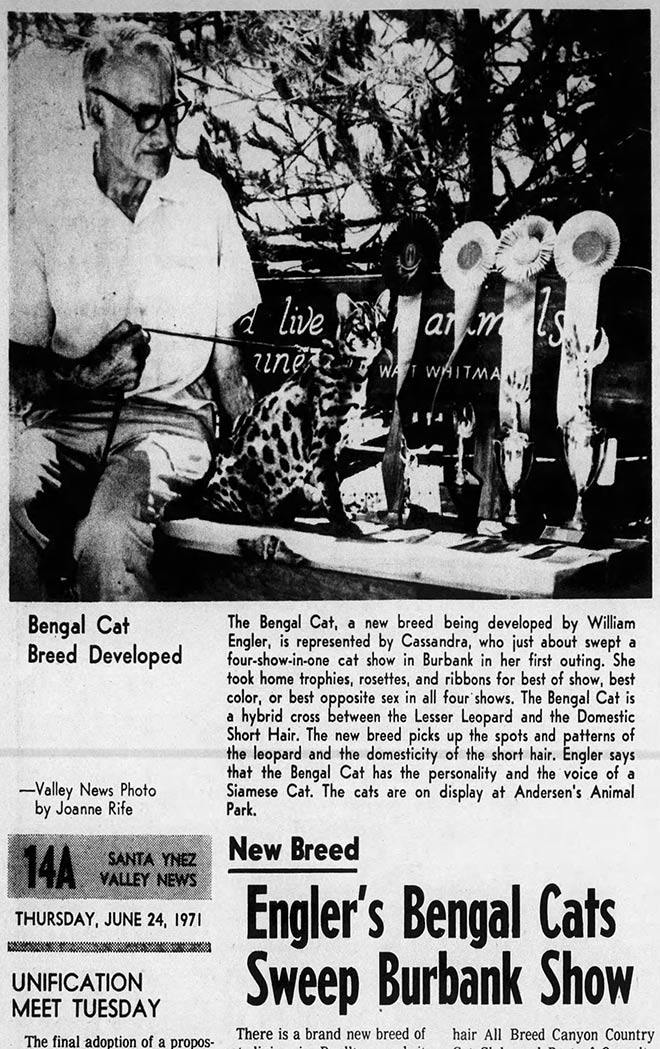
William “Bill” Engler, Santa Ynez Valley News, 1971 – © A.Hutcherson/Bengalcats.co
Gene Ducote of Gogees cattery was breeding and showing Ocicats in the mid 1980s when TICA judge Larry Paul told her that if she wanted a breed that really looked exotic she should get a Bengal Cat. She did and her Gogees cattery greatly contributed to the Bengal Cat’s progress and acceptance.
F1 and even 2G generation Asian Leopard Cat X domestic crosses were shown mostly in Southern California in ACFA during the mid 1970s. An unrelated group of Asian Leopard Cat X domestic cat crosses as well as Safari Cats (crosses between the Geoffroy’s Cat Leopardus geoffroyi and domestic cat) were exhibited in CFA (Cat Fancier’s Association) during the late 1970s and early 1980s in the Northeast and Mid Atlantic US.
Jean Mill registered the product of her breeding program as Leopardettes in 1986.
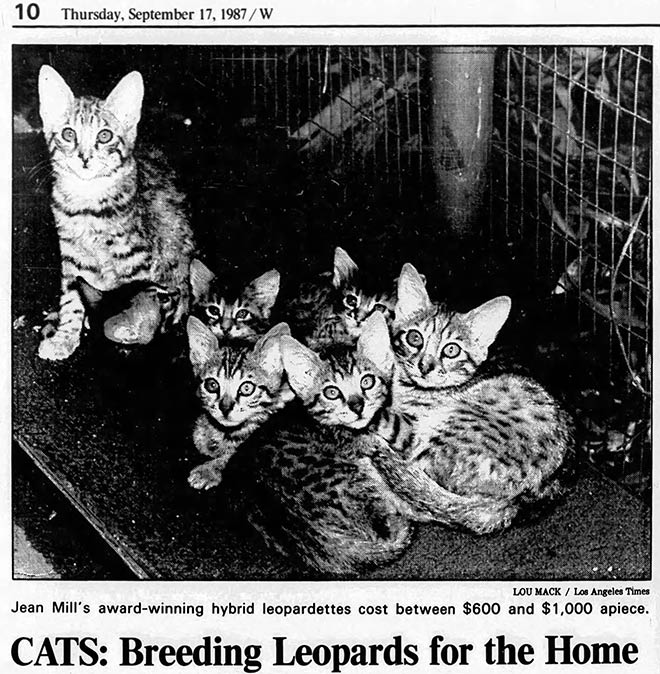
Jean Mill – breeding Leopards for the home, Los Angeles Times, 1987 – © A.Hutcherson/Bengalcats.co
She thought Bengal made people think of Tigers and that Leopardette was more descriptive of her goal. Initially, this was acceptable as her cats shared no relationship with the previous registered Bengal.
By 1987 confusion grew among breeders and TICA registration staff as to the differences between the two groups of cats descending from Asian Leopard Cat X domestic cat crosses. Jean Mill proposed that the Asian Leopard Cat X Domestic Cat crosses and second generation Asian Leopard Cat X Domestic backcrosses be registered as Bengal Cats. She proposed that third generation and subsequent domestic backcrosses be registered as Leopardettes. She cited her goal of creating a domestic breed, while Bill Engler was focused on the hybrid generations.
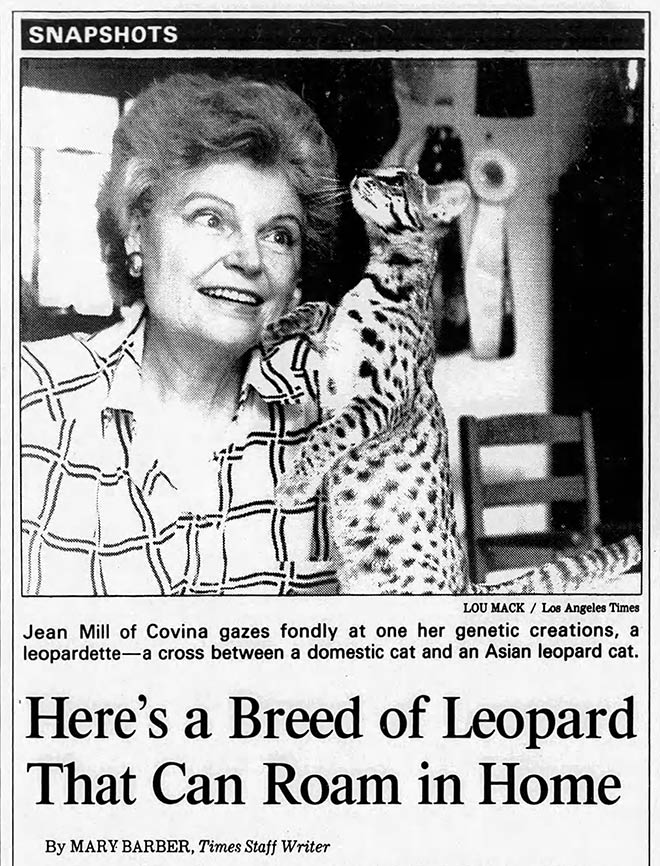
Jean Mill’s Leopardettes, Los Angeles Times, 1987 – © A.Hutcherson/Bengalcats.co
The motion failed because TICA did most registration on paper and it would be difficult and time consuming to physically review every registration for the distance of the leopard cat ancestor. If it had passed it may have eliminated many of the problems with restrictive regulation and public confusion.
G for Generation
The number G nomenclature does not exist in biological science. It does exist as a term in relation to technology where it also means generation.
According to statistics provided by TICA in 2015, 93% of all Bengal Cats ever registered to that point in TICA were SBT, however that is not the public perception of the breed. A survey of reactions to recent Bengal Cat internet sensations, via buzzfeed.com & instagram, will demonstrate radical reactions among “experts” sought for their opinion. Frequently those experts ranging from wildlife biologists to veterinarians note Bengal Cats are “half wild” citing incorrect terminology from cattery and breed association websites. Correct wording informs the public and these experts with the real information of how the breed has been and continues to be developed. It honors the work and effort of the Foundation cats and their breeders who utilized skill and artistry in breeding to preserve those precious genes through the generations.
F confusion at US Fish & Wildlife Service
In 2015, I met with US Fish & Wildlife Office of Enforcement. During the meeting there was a direct quotation from Bengal Cat breeder websites referencing F2 and F3 generations. This validated the agency’s argument that all Bengals continue to be “Half-Wild” and their need to inspect each individual animal. US Fish & Wildlife expressed disbelief that rosettes, white tummy, spotted legs and high contrast could be achieved if Bengal Cat breeders were backcrossing to domestic cats. Again they used the wording from Bengal Cat breeders own websites alongside scientific definitions to make their argument.
Efforts to demonstrate the lineage of several lines of Bengal Cats in photos to demonstrate how the Bengal Cat community uses the terms were not believed or considered anomalies.
Our community has to lead the cat fancy toward terms enthusiasts and the breeding community can use on websites, in conversation and in print that denote scientific awareness and accurate application. How we refer to our cats from the various stages of the breeding programs continuing to develop the Bengal Cat matters. The difference between the two could mean continued rights or increased regulation.
* The US Fish & Wildlife Service, an agency within the US Department of Interior is charged with the enforcement of Convention on International Trade in Endangered Species or CITES regulations by the US government. The Asian Leopard Cat are listed on Appendix II. Appendix II includes species not necessarily threatened with extinction, but in which trade must be controlled in order to avoid utilization incompatible with their survival.
* US Fish & Wildlife Service classified the Asian Leopard Cat as an endangered Species on June 14, 1976.
Poor Nomenclature:
[tie_list type=”cons”]
- Provides a false and inaccurate account of actual history.
- Perpetuates the falsehood, the Bengal Cat (and others) is a “hybrid breed” with a constant genotype of 50% wild. (Hudson Alpha Institute & Stanford University Medical School survey of 500+ SBT Bengal Cats found between 2-4% of their genes were those of Asian Leopard Cats in an ongoing genetic survey related to pattern pigmentation led by Chris Kaelin, PhD).
- Creates damaging ideas that selection is not occurring and the cats look as they do though “dumb luck” or happenstance and not the painstaking selection for a few poorly understood traits.
- Separates the application of basic scientific nomenclature from cat breeding. Cat breeding is very much a scientific activity involving observation, evaluation and choice toward the purposeful art of animal and cat breeding.
[/tie_list]
Good Nomenclature:
[tie_list type=”checklist”]
- Represents more accurately activity and history in accordance to accepted practices of related professional disciplines.
- Pairs the application of scientific principles with the accepted terminology of scientific endeavor.
- Identifies correctly the process of selection over successive generations that is part of the ongoing develop of a breed.
- Affirms the value of efforts, choices and people that create and sustain a breeding program. Healthy and beautiful domestic animals don’t fall from the sky; Healthy and beautiful domestic animals are the result of labors that must be appreciated.
[/tie_list]
Good Practices:
[tie_list type=”cons”]
- Avoid using terms such “Wild”, “Hybrid”, “Leopard Cat”, “Wildcat” or “Killer” when describing your domestic Bengal cat on social media, in print or on the internet.
[/tie_list]
[tie_list type=”checklist”]
- Do mention “Domestic”, “Wellbred”, “Purposefully bred”, ”Beautiful”, “Exotic”, “Fun”, “Loving”, “Toilet Paper Destroyer” and all the other aspects that inform and describe the joys of loving a Bengal Cat.
[/tie_list]
The modern Bengal Cat is a true masterpiece of nature, science, art and human endeavor that each Bengal Cat lover plays an important part.
[products limit=”3″ columns=”3″ orderby=”id” order=”DESC” visibility=”visible”]

